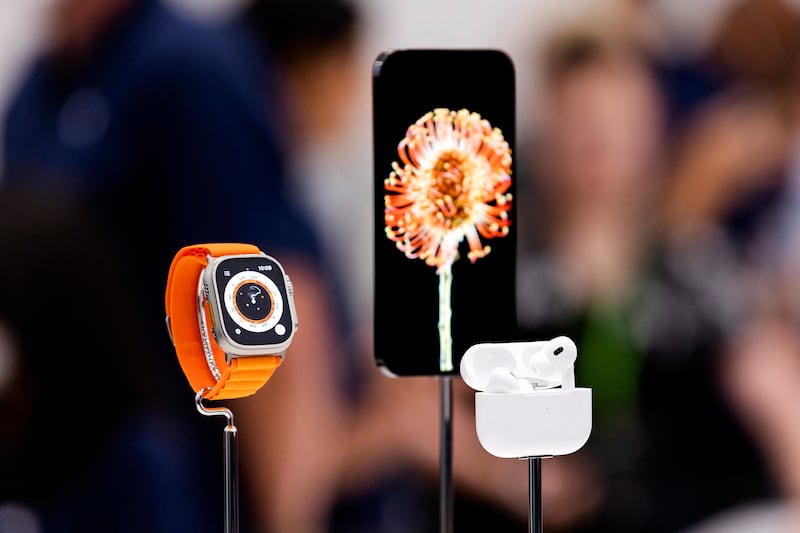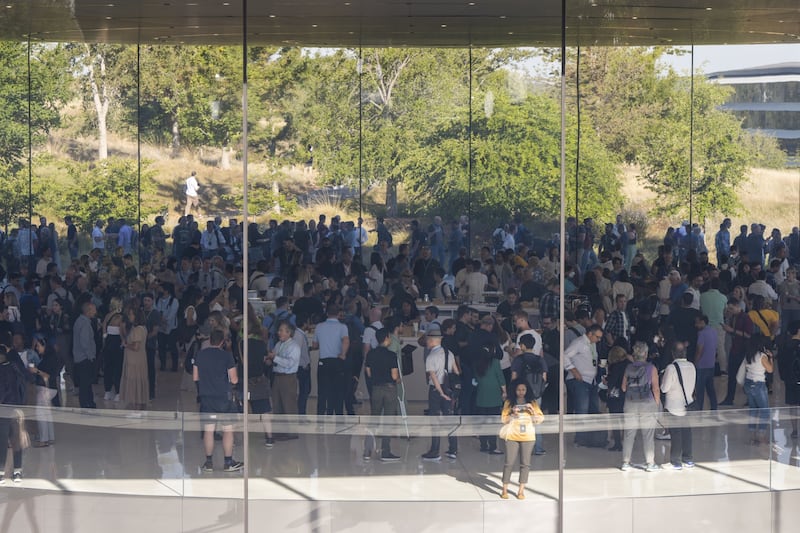Apple stepped up its competition in the wearables market as it unveiled a new version of its Apple Watch designed to appeal to serious fitness enthusiasts, while refreshing its iPhone models and updating its AirPod Pro earphones.
The Apple Watch Ultra, which has a longer battery life and a larger, brighter screen than the regular watch, was unveiled at an event in California where the company also showed off its latest iPhone 14 phones, and new AirPods Pro.
The company is hoping to make its products an essential feature of consumers’ lives, with new safety features and the addition of satellite communications for emergencies.
“Making products that are so personal and indispensable is what drives us to continue innovating, improving on what are already best-in-class experiences,” chief executive Tim Cook said.

The new watch line-up includes the Series 8, which has added crash detection and women’s health features, and the updated Watch SE with a new chip, alongside the Apple Watch Ultra.
“We set out to create an Apple Watch designed specifically for exploration, adventure and endurance and it’s extraordinary,” said Apple chief operation officer Jeff Williams. “This has been years in the making, and we can’t wait to show it to you.”
The Apple Watch Ultra has a 49mm case, is made from aerospace-grade titanium and is light, durable, and corrosion resistant. It will ship to customers from September 23rd, with Irish customers expected to pay €999 for the new watch.
The Series 8, meanwhile, has been upgraded, including some new features aimed at women’s health, with a temperature sensor that can retrospectively estimate ovulation. Cycle tracking through the health app can also, it says, help pinpoint irregularities that could indicate more serious conditions. A crash detection feature will call for help if you are in a crash; it uses two motion sensors and an improved gyroscope to detect if you are in a severe car crash, automatically detects your location and connects you with emergency services. It can sense the precise moment of impact, but runs only when you are driving and processes data on the device around the time of a crash.
A low power mode in the Apple Watch gives users 36 hours of power by disabling some of the more advanced background features, such as automatic workout detection.

Apple also unveiled new iPhones at the event. As expected, the company has ditched the iPhone Mini, opting instead to add the large screen iPhone 14+ to the regular iPhone 14 line-up, bringing it in line with the Pro models.
The 12 megapixel main camera on the iPhone 14 has been improved with a faster aperture, larger sensor and larger pixels. The front camera, meanwhile, has a new TrueDepth camera with a faster aperture to improve low light capture, brings in autofocus for the first time, and a hybrid system that can focus faster in low light.
The new iPhone 14 will also support emergency SOS via satellite, a safety feature that will allow people to call for help even when they are out of range of mobile networks. The feature can also be used to manually share your location through the Find My app. The feature will initially launch in the US and Canada later this year, and will be available free of charge for two years with the iPhone 14.
The Pro models meanwhile get a more powerful chip. The iPhone 14 and 14+ will get the A15 Bionic chip introduced with last year’s iPhone 13, with a five-core GPU for faster, smoother graphics. The Pro’s A16 Bionic chip, which Apple is claiming as the fastest in a smartphone, has a six-core CPU that it says is up to 40 per cent faster than the competition. The Pro now has a 48 megapixel camera with a quad pixel sensor, the largest yet on the company’s phones.
The new Pro models also ditch the long-hated notch, opting for pill-shaped punch out of the screen and the addition of a so-called dynamic island for notifications and other information. It also has an always-on display, with essential information available at a glance. But Apple promises that it won’t kill your battery, with the display able to operate at a refresh rate as low as 1Hz with a new low power mode.
The new AirPods, meanwhile, include personalised profiles for spatial audio, and new touch controls for volume. The profiles will use the iPhone’s TrueDepth camera to take into account a user’s head and ear shape,
The new earbuds, which will cost €299, also have longer battery life, the new H2 chip and better audio quality with a low distortion audio driver and a custom amplifier to power it for more detail and clarity.






